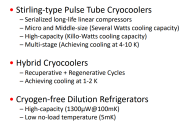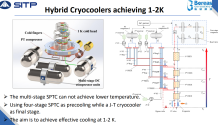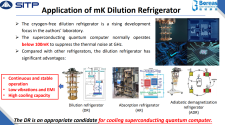The production of the first PRVR has been successfully completed
Recently, the first PRVR ( pressure relief valve ) undertaken by Hefei Keju Cryogenic Technology Co., Ltd. has been successfully produced and tested.
PRVR is an important component of ITER FEEDER, connected to CTB (coil terminal box), responsible for the pressure relief of the entire system, and is an important safety component. The types of valves in PRVR are the most diverse among FEEDER components, with complex functions and high technical specifications and testing requirements.
Since undertaking the project, the company has completed the complete process from design to production to testing. In design, the selection and design changes of all valve components have been completed, and all drawings and production documents have been prepared; In production, a large number of production difficulties have been solved and production has been successfully completed; In testing, the engineering designers designed a complete testing plan and completed the acceptance testing of PRVR.
PRVR production is another important FEEDER procurement package task undertaken by the company. The successful completion of the first PRVR has opened a good start for the production of over 20 PRVR units in the future.
Keju Cryogenics successfully completed the first pair of current lead tests at BEST
Recently, after unremitting efforts, the company's test team successfully completed the low-temperature electrical performance test of the first pair of 55kA current leads of BEST , including steady-state test, LOFA test, joint resistance test and cold end thermal leakage test . All test results meet the design requirements. The success of this test is inseparable from the hard work and professional knowledge of the test team. They overcame many difficulties and ensured the smooth progress of the test.
As a follow-up project of the All-Superconducting Tokamak Nuclear Fusion Experimental Device ( EAST), the Compact Fusion Energy Experimental Device ( BEST ) will demonstrate fusion energy power generation for the first time based on the first generation of EAST devices, and is expected to be the first to build the world's first compact fusion energy experimental device. The completion of the test work not only verified the performance indicators of the first pair of high-temperature superconducting current leads of BEST, but also laid a solid foundation for the company's future research and development and production in this field. At the same time, the company will continue to work hand in hand with other companies and research institutions in the industry to jointly promote the rapid development and application of high-temperature superconducting technology.




